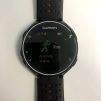
Recently we are hearing more and more stories of harassment, assault and even murder of predominately female runners across the US. It’s so tragic, and has naturally stirred a huge discussion in the running community about what we can and should do to protect ourselves.
It’s no coincidence that companies are launching lots of runner-safety themed solutions, and one area that seems to be getting a huge boost is real-time activity tracking. As most runners know, it’s usually the people you leave behind at home that do most of the worrying.
Let’s look at some of the available offerings…
Strava has beacon, which is now part of it’s Summit safety pack. I have not used beacon, as I use Strava’s free tier, and this feature is a paid extra. I know most people I’ve talked to have not regretted moving to the premium tier of Strava.
Road iD, the guys that brought us the awesome Road iD bracelet, now have an app to help friends and family track you in real time. I have not used this service, but from what I read online it’s free and has a couple of neat features I should mention.
You can have the Road iD app send a stationary alert (if you stop moving for more than 5 minutes), and you can customize your phone’s lock screen with emergency contact information — very nice!
The application I will be focusing on in this post is Garmin Connect’s LiveTrack. This feature is bundled with Garmin Connect, paired with selected Garmin devices (e.g. Forerunner, Fenix, etc.). I have used LiveTrack on every activity for the last year or more, so my wife always knows where I am and how my training is going.
For such an important feature, Garmin doesn’t seem to do a great job at publicizing LiveTrack. I searched online and found a Garmin blog post that gives a brief overview of it — but that’s it.
The very reason I’m putting this post together is because of a recent Twitter thread, where many Garmin users didn’t know this existed.
Fortunately, LiveTrack is really easy to set-up and use and works really well. To find it, open Garmin Connect on your phone and select the “More” menu item. Then click on the LiveTrack link.
Once on the LiveTrack page, you have multiple options. You can choose to start LiveTrack automatically on each activity [1], or manually start it.
By default, the recipient(s) will only be able to view your activity while you are active. If you want the activity to stay accessible after you have finished, you can extend this by 24 hours only.
Recipients can be informed by email and/or Twitter. The Facebook option is currently unavailable, I’m guessing due to some recent Facebook policy changes. I have currently two email recipients, one to my wife and one to me.
I have never used the Twitter option. I guess this would be fun to use for a race event, but I would not broadcast training runs live to Twitter. No way.
When an activity starts (or when you decide to start LiveLink), a link is sent out that will take the user to your live activity page where they can track your position and current activity data.
Providing they know how long you had planned to be out, and a rough idea of your route, this data should help the viewer determine if you’ve ran into trouble or not.
If you have to run alone, always tell someone where you’re going and when you think you’ll be back. If you’re a Garmin user, do check out this great tool and tell others about it. Keep safe out there.
Question: What other tools/technology do you use to stay safe?
[1] I had trouble recently with the automatic start of LiveTrack. After reading online, it appeared the best solution was to remove the app from my phone and re-install. This resolved it for me.





















